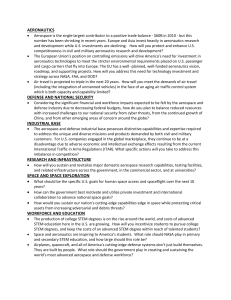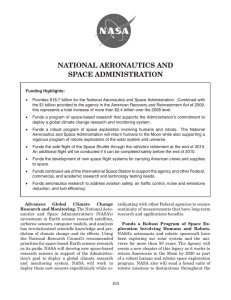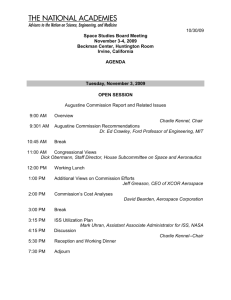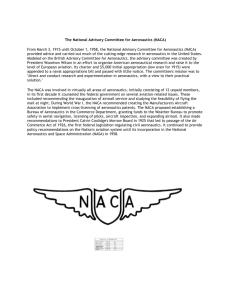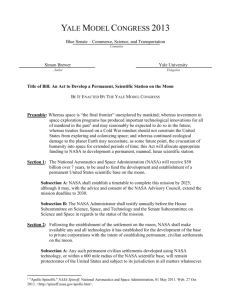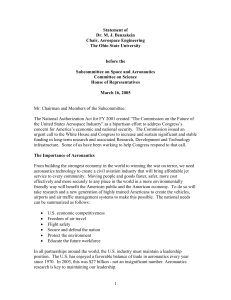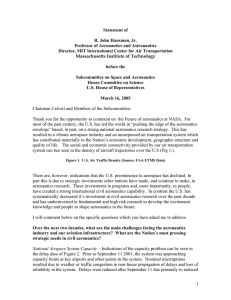OPENING STATEMENT Chairman Ken Calvert (R-CA) Space and Aeronautics Subcommittee
advertisement
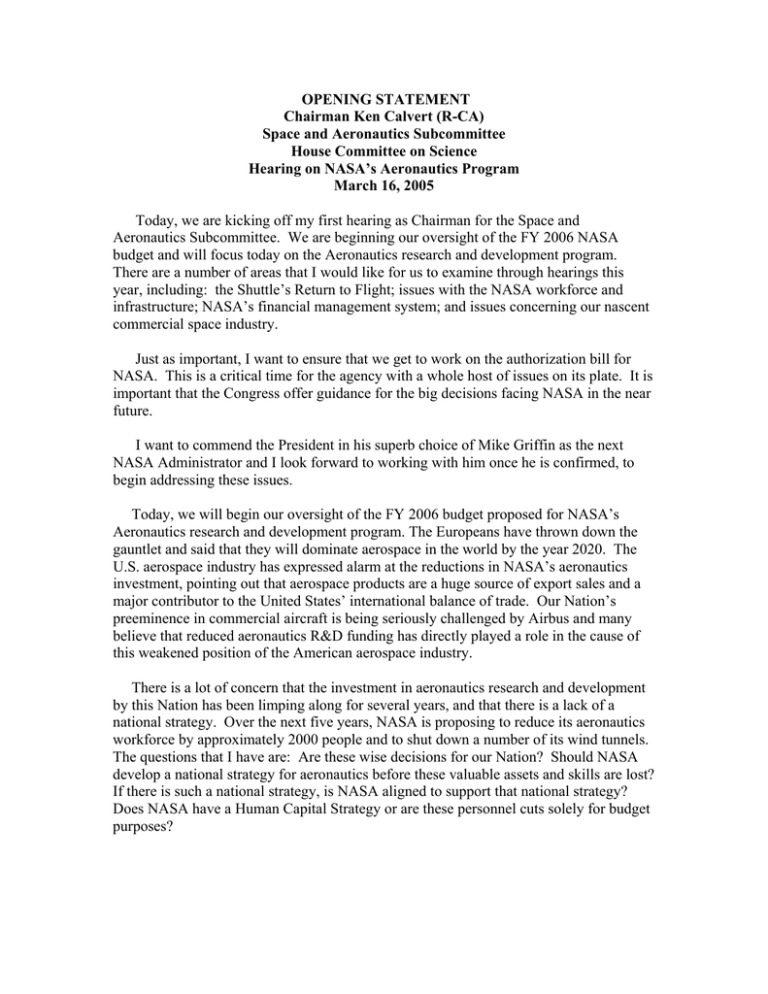
OPENING STATEMENT Chairman Ken Calvert (R-CA) Space and Aeronautics Subcommittee House Committee on Science Hearing on NASA’s Aeronautics Program March 16, 2005 Today, we are kicking off my first hearing as Chairman for the Space and Aeronautics Subcommittee. We are beginning our oversight of the FY 2006 NASA budget and will focus today on the Aeronautics research and development program. There are a number of areas that I would like for us to examine through hearings this year, including: the Shuttle’s Return to Flight; issues with the NASA workforce and infrastructure; NASA’s financial management system; and issues concerning our nascent commercial space industry. Just as important, I want to ensure that we get to work on the authorization bill for NASA. This is a critical time for the agency with a whole host of issues on its plate. It is important that the Congress offer guidance for the big decisions facing NASA in the near future. I want to commend the President in his superb choice of Mike Griffin as the next NASA Administrator and I look forward to working with him once he is confirmed, to begin addressing these issues. Today, we will begin our oversight of the FY 2006 budget proposed for NASA’s Aeronautics research and development program. The Europeans have thrown down the gauntlet and said that they will dominate aerospace in the world by the year 2020. The U.S. aerospace industry has expressed alarm at the reductions in NASA’s aeronautics investment, pointing out that aerospace products are a huge source of export sales and a major contributor to the United States’ international balance of trade. Our Nation’s preeminence in commercial aircraft is being seriously challenged by Airbus and many believe that reduced aeronautics R&D funding has directly played a role in the cause of this weakened position of the American aerospace industry. There is a lot of concern that the investment in aeronautics research and development by this Nation has been limping along for several years, and that there is a lack of a national strategy. Over the next five years, NASA is proposing to reduce its aeronautics workforce by approximately 2000 people and to shut down a number of its wind tunnels. The questions that I have are: Are these wise decisions for our Nation? Should NASA develop a national strategy for aeronautics before these valuable assets and skills are lost? If there is such a national strategy, is NASA aligned to support that national strategy? Does NASA have a Human Capital Strategy or are these personnel cuts solely for budget purposes? Page 2. Calvert Opening Statement March 16, 2005 The current requested funding levels for the Aeronautics programs amount to a little over 5 % of NASA’s overall budget. The funding trend is declining at a rather precarious rate over the next several years. I am hoping that today’s witnesses are able to offer guidance to this Subcommittee in addressing what this Nation’s aeronautics priorities should be and how NASA should address these priorities. In the FY2006 budget request, NASA offers three programs in the Aeronautics R&D area. Of the three, Airspace Systems and Aviation Safety & Security are funded at a flat level and Vehicle Systems received a 20 percent cut (-$100M). This does not appear to bode well for our Nation’s investment in the future of the aerospace industry and our Nation’s competitiveness. I look forward to hearing from our witnesses today on this very important topic. ###


